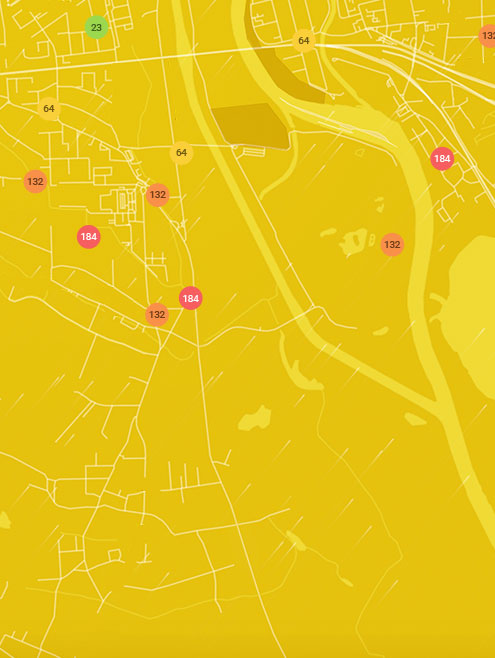Get a monitor and contributor to air quality data in your city.
38.2K people follow this station






AIR QUALITY DATA CONTRIBUTORS
Find out more about contributors and data sources| Weather | Scattered clouds |
| Temperature | 84.2°F |
| Humidity | 67% |
| Wind | 11.1 mp/h |
| Pressure | 29.7 Hg |
| # | city | US AQI |
|---|---|---|
| 1 | Mae On, Chiang Mai | 185 |
| 2 | Doi Saket, Chiang Mai | 176 |
| 3 | Chiang Mai, Chiang Mai | 171 |
| 4 | San Sai, Chiang Mai | 171 |
| 5 | Uttaradit, Uttaradit | 161 |
| 6 | Mae Mo, Lampang | 152 |
| 7 | Chiang Rai, Chiang Rai | 135 |
| 8 | Sukhothai, Sukhothai | 129 |
| 9 | Phetchabun, Phetchabun | 112 |
| 10 | Mae Sot, Tak | 101 |
(local time)
SEE WORLD AQI RANKING
| # | station | US AQI |
|---|---|---|
| 1 | Prawet District | 173 |
| 2 | Thawi Wanarom Park, Thawi Watthana District | 173 |
| 3 | Sri Nakhon Khuean Khan Park | 127 |
| 4 | Soi Phaholyothin 56 | 92 |
| 5 | Chaiyaphruek Ramindra-ChatuChot Village | 82 |
| 6 | Thung Khru District | 82 |
| 7 | Khlong Sam Wa District | 77 |
| 8 | CSPM Thailand | 76 |
| 9 | Visit home | 76 |
| 10 | FUJISiam888.com | 74 |
(local time)
SEE WORLD AQI RANKINGUS AQI
60
live AQI index
Moderate
| Air pollution level | Air quality index | Main pollutant |
|---|---|---|
| Moderate | 60 US AQI | PM2.5 |
| Pollutants | Concentration | |
|---|---|---|
| PM2.5 | 16.4µg/m³ | |
| PM10 | 1µg/m³ | |
| O3 | 26µg/m³ | |
| NO2 | 32µg/m³ | |
| Sensitive groups should reduce outdoor exercise | |
| Close your windows to avoid dirty outdoor air GET A MONITOR | |
| Sensitive groups should wear a mask outdoors GET A MASK | |
| Sensitive groups should run an air purifier GET AN AIR PURIFIER |
| Day | Pollution level | Weather | Temperature | Wind |
|---|---|---|---|---|
| Tuesday, Apr 23 | Moderate 82 AQI US | |||
| Wednesday, Apr 24 | Moderate 62 AQI US | |||
| Thursday, Apr 25 | Moderate 56 AQI US | |||
| Today | Moderate 60 AQI US | 98.6° 84.2° | ||
| Saturday, Apr 27 | Moderate 61 AQI US | 100.4° 84.2° | ||
| Sunday, Apr 28 | Moderate 61 AQI US | 100.4° 84.2° | ||
| Monday, Apr 29 | Moderate 61 AQI US | 100.4° 84.2° | ||
| Tuesday, Apr 30 | Moderate 65 AQI US | 102.2° 82.4° | ||
| Wednesday, May 1 | Moderate 66 AQI US | 102.2° 80.6° | ||
| Thursday, May 2 | Moderate 60 AQI US | 100.4° 82.4° |
Interested in hourly forecast? Get the app
Contributor
Government Contributor